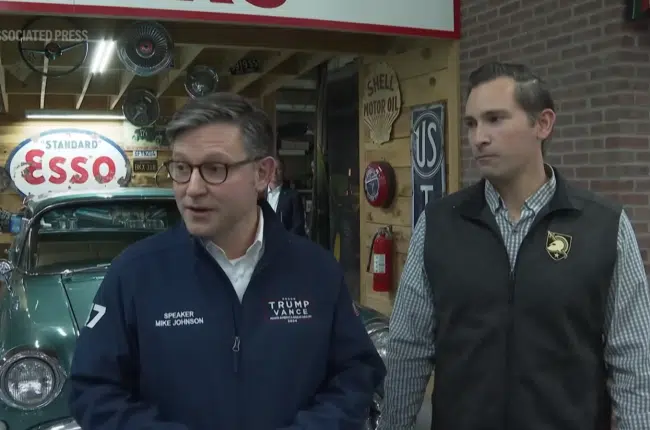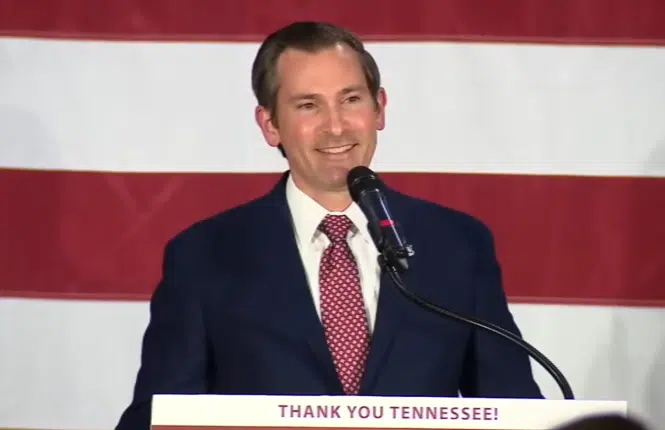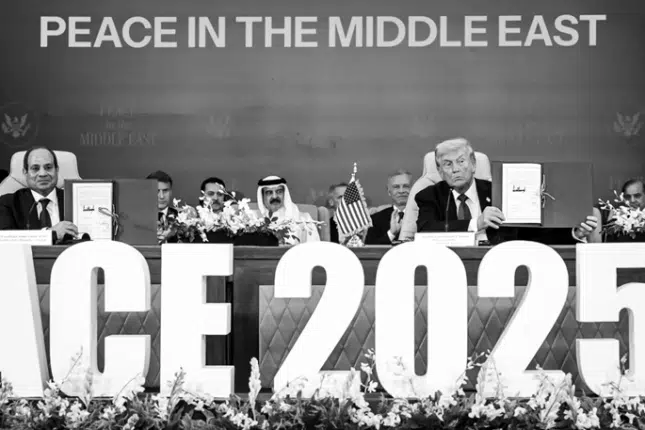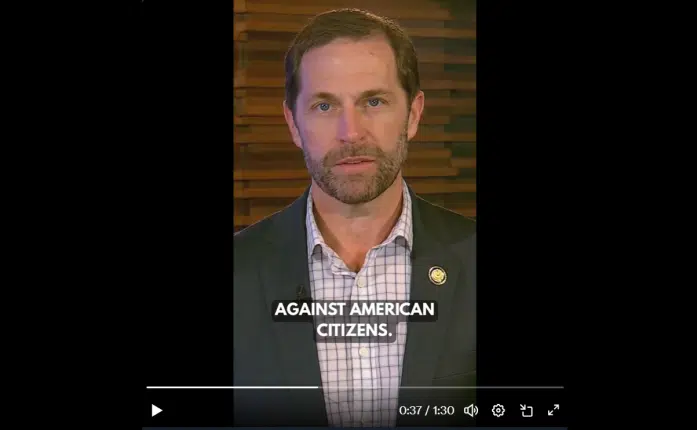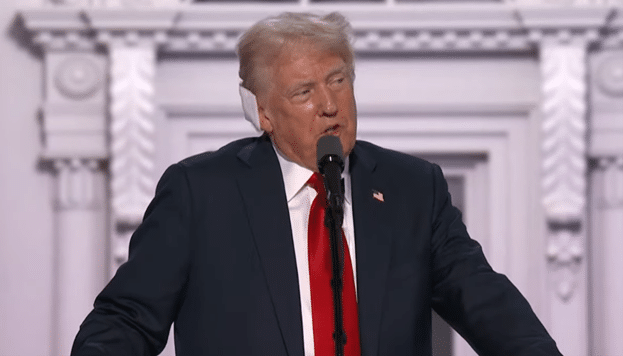
“I’m not supposed to be here tonight, not supposed to be here.”
That was former President Donald Trump’s assessment of the near-fatal assassination attempt against him on July 13 at his Butler, Pa. campaign rally, that it was a miracle he was still alive, as he accepted the Republican Party nomination on July 18 in Milwaukee, Wis.
As the crowd chanted, “Yes you are!” Trump insisted he should be dead: “But I’m not [supposed to be here] and I’ll tell you. I stand before you in this arena only by the grace of Almighty God. In watching the reports over the last few days, many people say it was a providential moment. Probably was.”
At his first speech since his brush with death, Trump recounted that but for referring to a chart on illegal immigration, where he turned his head at the last second, and “if I had not moved my head at that very last instant, the assassin’s bullet would have perfectly hit its mark and I would not be here tonight. We would not be together.”
Trump’s humble retelling carried over into the rest of the speech as he softened his attacks on President Joe Biden and offered a less partisan style speech, stating, “I am running to be President for all of America, not half of America, because there is no victory in winning for half of America.”
That set the mood for the remainder of Trump’s speech: This is a man on a mission to finish what he started when he began running for President the first time in 2015 and won the 2016 election against Hillary Clinton, overcoming incredible odds.
Illegal immigration has never been worse, with 8.1 million southwest border encounters since Biden took office in Jan. 2021, the most in American history over comparable time intervals. In part, it is that stat that explains Trump’s decision to run for office again, and it is definitely that stat that saved his life.
To address it, Trump says he will finish the border wall that began under his watch. He will reinstitute the Remain in Mexico policy that Biden ended. And he plans to undertake a massive deportation operation.
To garner international support for the policies, Trump promised to once again leverage economic aid and tariff threats against countries that do not cooperate with U.S. policies on trade, immigration and fighting the drug cartels.
On foreign policy, Trump once again warned not just his supporters by all Americans and indeed the entire world that we are on the brink of nuclear war: “our planet is teetering on the edge of World War III. And this will be a war like no other war because of weaponry. The weapons are no longer army tanks going back and forth shooting at each other. These weapons are obliteration. It’s time for a change. This administration can’t come close to solving the problems.”
On the campaign trail, Trump has supported pursuing a diplomatic strategy specific to Ukraine to achieve peace — if possible — and to avoid the worst as the war there continues to escalate.
Trump also threatened Hamas to return all American hostages currently being held before he returns to office or “the entire world, I tell you this, we want our hostages back, and they better be back before I assume office… or you will be paying a very big price.”
On the economy, Trump referenced inflation 14 times, and promised to reduce costs on food and energy by boosting production, and also with tax relief including no tax on tips, regulation cuts and lower interest rates. On the latter, interest rates might come down all on their own as the economy overheats, Americans max out their credit cards and prices cool, with the unemployment rate already rising, from a low of 3.4 percent in April 2023 now up to 4.1 percent in June.
A lot of the speech was largely boilerplate from Trump campaign rallies as the former president occasionally broke into adlibbing, but the overall moment was well-crafted, including a touching tribute to Corey Comperatore who lost his life at the Butler, Pa. rally while he was heroically shielding his family.
Following the assassination attempt, Trump’s rhetorical challenge was to meet that moment, to relate what happened to him and to show that he was okay, and that he was back. As the tempo of the speech shifted to more upbeat and animated in the second half as Trump really got into the swing of it, the American people were treated to a candidate who is fully able and motivated to lead the country he loves.
Trump showed strength.
At Butler, Pa., Trump told the assembled crowd to “Fight!” and in Milwaukee, Wis. he started to show how he intends to do that on the campaign trail with a message that can resonate not just with Republicans, but also independents and Democrats who might be on the fence. America’s leadership is currently weak, but Trump is strong — and America needs to be strong.
Robert Romano is the Vice President of Public Policy at Americans for Limited Government Foundation.



